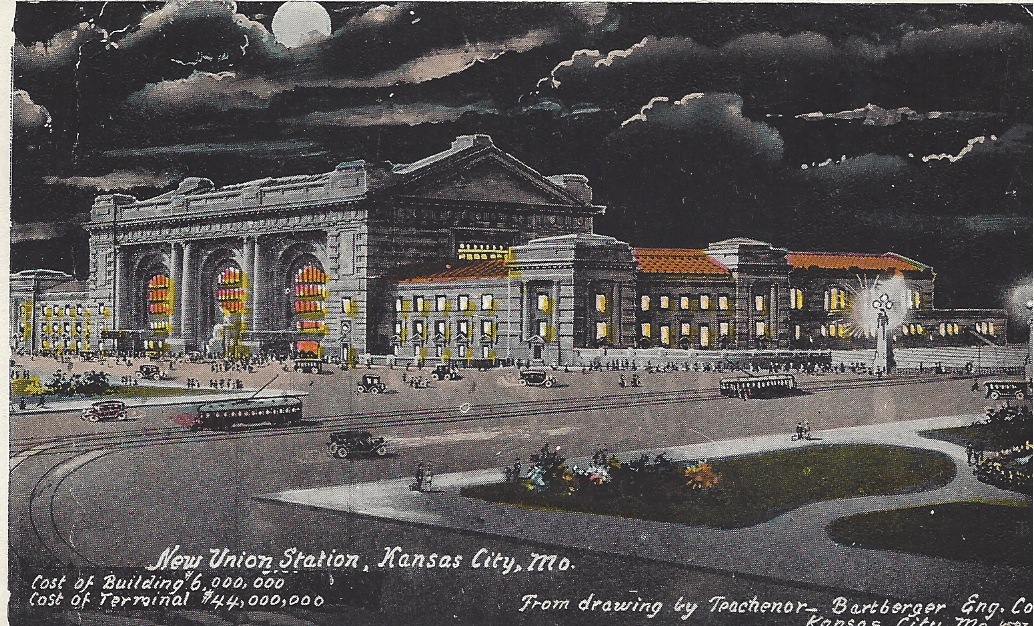Union Station by moonlight
After the great flood of 1903 that destroyed Kansas City’s original railroad depot, the city had to start anew. The replacement Union Station, 30 W. Pershing Rd, was completed in 1914. Just three years after opening, the railroad station saw 271 trains a day and almost 80,000 per year. The depot broke its own record in 1945, after WWII’s end, when nearly 680,000 trains (packed with returning U.S. soldiers) came through the station. Kansas City made national headlines prior in 1933 with “Union Station Massacre.” The infamous mobster Frank Nash, who was under protection of the FBI, was shot and killed, along with four police officers, during a massive gang-related shoot-out that was supposedly lead by Adam Richetti. For years, many believed that bullet holes spewed across the front of the building from the shoot-out, but modern forensics proved the theories to be incorrect. Unfortunately, the railroad station lost its popularity starting in the 1950s when air travel started to become more main-stream. In 1983, the station closed its doors to the public for 15 years and then reopened in 1999. Now, the Union Station is home to Science City, a variety of restaurants, collections of historical artifacts and traveling museums.











